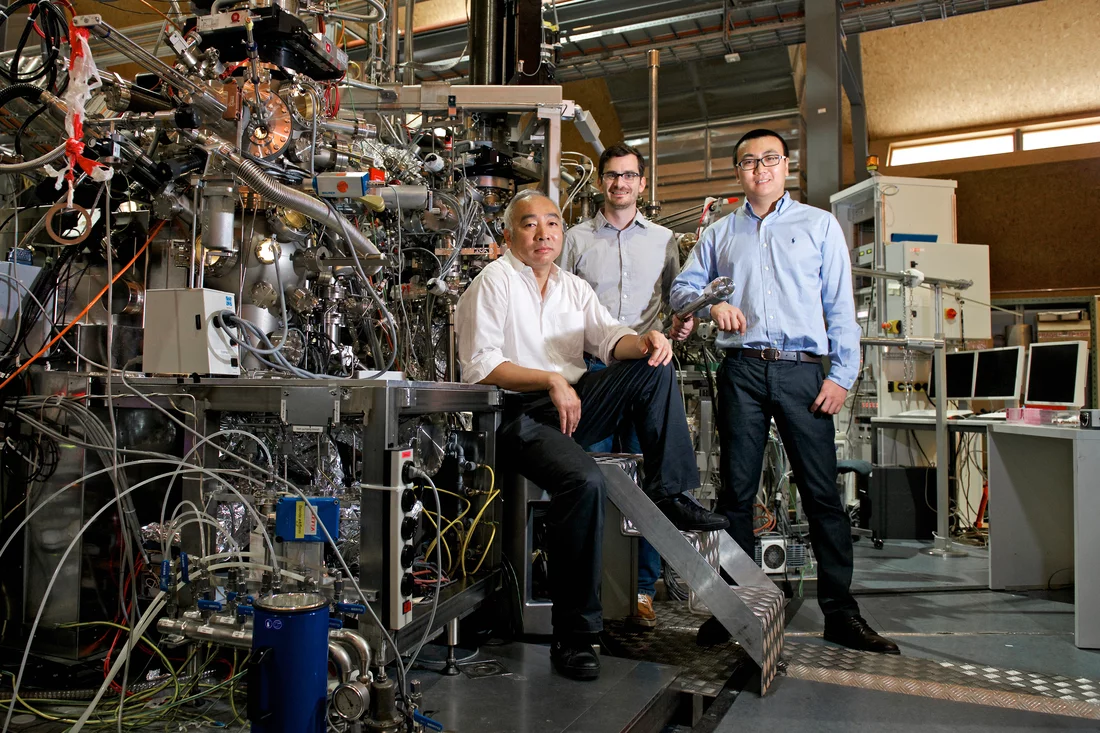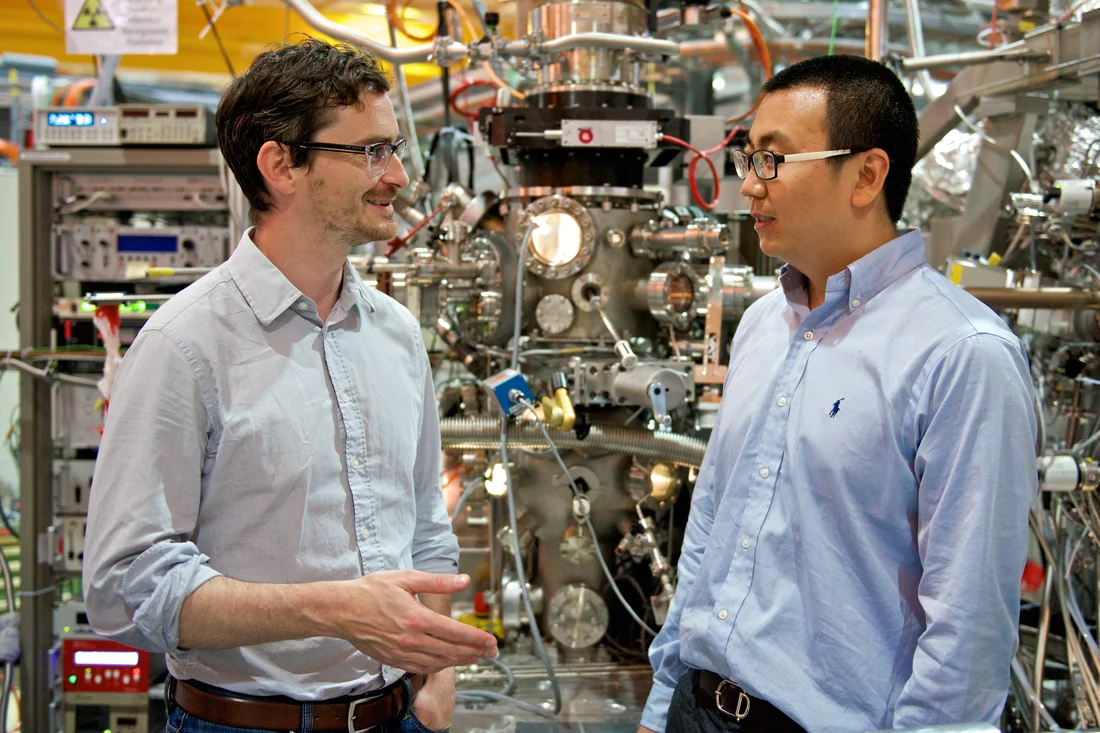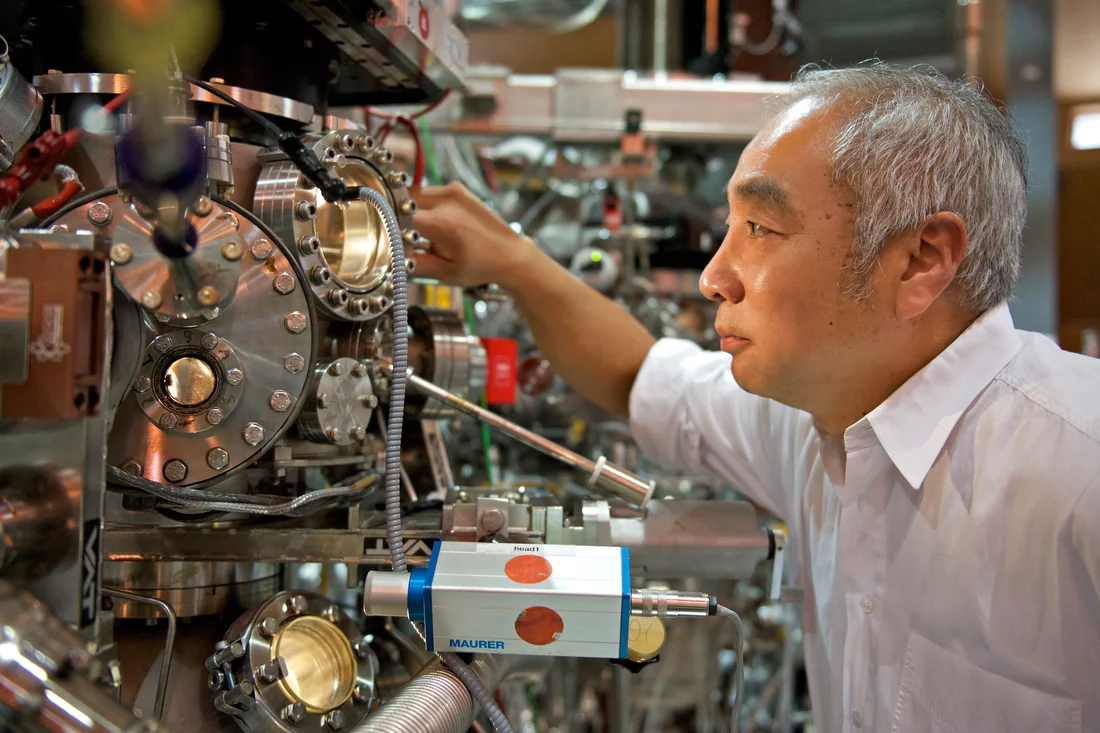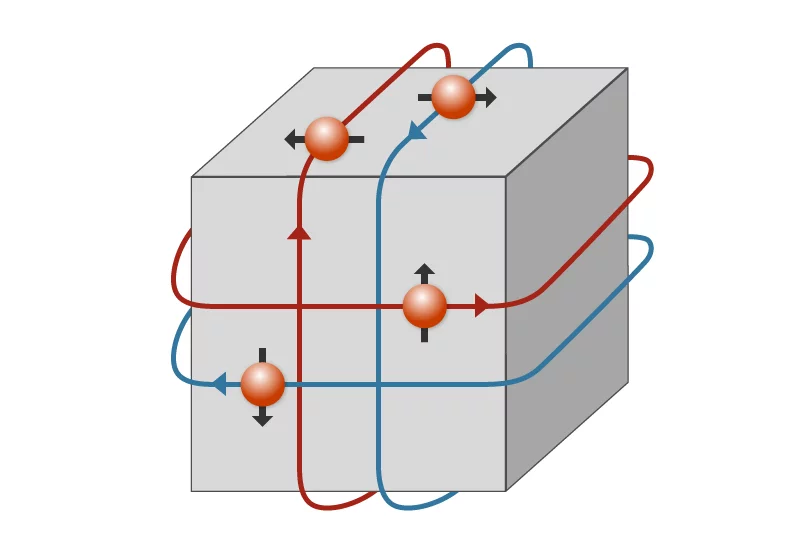Novel material shows properties necessary for spintronic devices
The motion of electrons is at the heart of most electronic applications. However, in the quest for the next generation of devices, researchers are also interested in manipulating the electrons’ spins – their traits that make them into tiny magnets. This new technology, called spintronics, has already found its way into electronic devices like hard drives and will lead to smaller and faster devices with unexpected functionalities in the future. Spintronics requires polarized electric currents with all the electron spins pointing in one direction. Researchers at the Paul Scherrer Institute (PSI), the Ecole Polytechnique Fédérale de Lausanne (EPFL), and the Institute of Physics (IOP) at the Chinese Academy of Sciences have now proven that the material SmB6 shows all the properties of a so-called topological insulator – a material with currents of spin-polarized electrons flowing along its surface. In the bulk, away from the surface, the material is an insulator and does not allow any currents to flow. The polarized currents are a result of the insulating property inside, and these properties are directly interconnected; above a particular temperature where the sample becomes conducting, the spin-polarized currents vanish. SmB6 is not the first topological insulator to be discovered, but in contrast to other materials, the insulating property is based on a special phenomenon that makes it very robust – the so-called Kondo effect. This effect ensures that the only current that can flow is spin-polarized, and this special property is not easily destroyed by small irregularities in the structure or composition of the material. The different properties were studied with synchrotron light at the Swiss Light Source of the Paul Scherrer Institute.
Every electron has a spin, a property that makes it into a tiny magnet. And as the spin can point in different directions, it constitutes a property of the electron that can be useful in electronic devices. Today, the heads that read out data from a hard disk are made from materials that have different values for the electric resistance depending on the orientation of the electron spins in the current. In the future, data might be stored in the orientation of electron spins with a single bit corresponding to a few spins. A crucial prerequisite for the use of spintronic devices are spin-polarized currents with the spins of all electrons pointing in the same direction. In 2005, scientists predicted the existence of a novel class of materials they called topological insulators. One of the features of a topological insulator is that while it is insulating inside – in the bulk
– it sustains an electric current on its surface. The current will necessarily be spin-polarized for fundamental reasons and which can not easily be destroyed. Thus, such a material might provide the spin-polarized currents necessary for spintronics.
Reliably polarized currents
The theoretical prediction of topological insulators triggered intense research activity with the goal of identifying materials belonging to this class, and many of the groundbreaking experiments to discover and investigate topological insulators have been performed at the Swiss Light Source SLS at the Paul Scherrer Institute PSI in Switzerland. A team of researchers from the PSI, the Ecole Polytechnique Fédérale de Lausanne, and the Institute of Physics (IOP) at the Chinese Academy of Sciences have now shown that the material SmB6 (Samarium Hexaboride) is also a topological insulator. It is not the first known example of this kind of material, but the insulating property of the bulk material is based on a different phenomenon (the Kondo effect) than in other topological insulators. This phenomenon makes its properties very robust in contrast to other topological insulators, where the bulk becomes conducting as soon as the structure or composition of the material slightly deviates from the ideal form. This robustness of the bulk insulation is an important prerequisite for the use of a topological insulator in spintronic devices. Still, SmB6 may not be immediately suited to real-world applications. This particular material will most likely not be used in devices, as it shows the relevant properties at very low temperatures only,
explains Ming Shi, the responsible scientist at PSI. But our experiments provide a proof of principle – they show that materials with these properties actually exist.
On the other hand, the robust properties of SmB6 are of fundamental interest for the creation of many new physical phenomena, and it will provide a rich playground for many years to come
, further emphasizes Hugo Dil, a scientist at EPFL. Nan Xu, a postdoctoral fellow at PSI, is very enthusiastic about the next developments in this new field: We are continually working on these types of new materials, and we are trying to induce other exotic phenomena in the system, e.g. superconductivity, to achieve new states that can potentially realize quantum computers.
Ejected electrons show what is going on in a material
The scientists studied the material using synchrotron light from the Swiss Lights Source of the Paul Scherrer Institute, an accelerator facility with a circumference of 288 meters. Synchrotron light is a special kind of x-ray light – one major advantage of synchrotron light lies in the possibility of adjusting the light’s properties to the needs of a particular experiment. In the experiments on the behavior of SmB6, the scientists illuminated the samples with synchrotron light. The energy of the light was then transferred to electrons in the material, and as a result electrons were ejected. A detector measured the properties of the ejected electrons, and the results allowed the scientists to conclude how the electrons had behaved when still inside the material. A special apparatus only available at the PSI was necessary for measuring the spin properties of the electrons
, Ming Shi explains We also had to make sure that the spins of the electrons we have observed were not an artifact introduced by the light, but really reflected an intrinsic property of the material. Thus, we repeated the experiment with different light polarizations and found out that in all cases the results were in agreement with the predictions for a topological insulator.
Text: Paul Scherrer Institute/Paul Piwnicki
About PSI
The Paul Scherrer Institute PSI develops, builds and operates large, complex research facilities and makes them available to the national and international research community. The institute's own key research priorities are in the fields of matter and materials, energy and environment and human health. PSI is committed to the training of future generations. Therefore about one quarter of our staff are post-docs, post-graduates or apprentices. Altogether PSI employs 1900 people, thus being the largest research institute in Switzerland. The annual budget amounts to approximately CHF 350 million.
Additional Information
SIS beamline at SLS http://www.psi.ch/sls/sis/Reserach group Spectroscopy of Novel Materials http://www.psi.ch/specnovmat/spectroscopy-of-novel-materials-group
Spin Orbit Interaction Spectroscopy at EPFL http://sois.epfl.ch/
Contact
Prof. Dr. Ming Shi; Laboratory for Synchrotron Radiation – Condensed Matter, Paul Scherrer Institute, 5232 Villigen PSI, SwitzerlandTelephone: +41 56 310 23 93; E-mail: ming.shi@psi.ch
Prof. Dr. Hugo Dil, Institute of Condensed Matter Physics (ICMP), Ecole Polytechnique Fédérale de Lausanne (EPFL), CH-1015 Lausanne, Switzerland
Telephone: +41 21 693 53 76, E-mail: hugo.dil@epfl.ch
Dr. Nan Xu; Laboratory for Synchrotron Radiation – Condensed Matter, Paul Scherrer Institute, 5232 Villigen PSI, Switzerland
Telephone: +41 56 310 51 41; E-mail: nan.xu@psi.ch
Dr. Nicholas Plumb; Laboratory for Synchrotron Radiation – Condensed Matter, Paul Scherrer Institute, 5232 Villigen PSI, Switzerland
Telephone: +41 56 310 30 87; E-mail: nicholas.plumb@psi.ch
Original Publication
Direct observation of the spin texture in strongly correlated SmB6 and experimental realization of the first topological Kondo insulatorN. Xu, P.K. Biswas, J.H. Dil, R.S. Dhaka, G. Landolt, S. Muff, C.E. Matt, X. Shi, N.C. Plumb, M. Radovic, E. Pomjakushina, K. Conder, A. Amato, S.V. Borisenko, R. Yu, H.-M. Weng, Z. Fang, X. Dai, J. Mesot, H. Ding & M. Shi
Nature Communications 30 July 2014 DOI: 10.1038/ncomms5566




